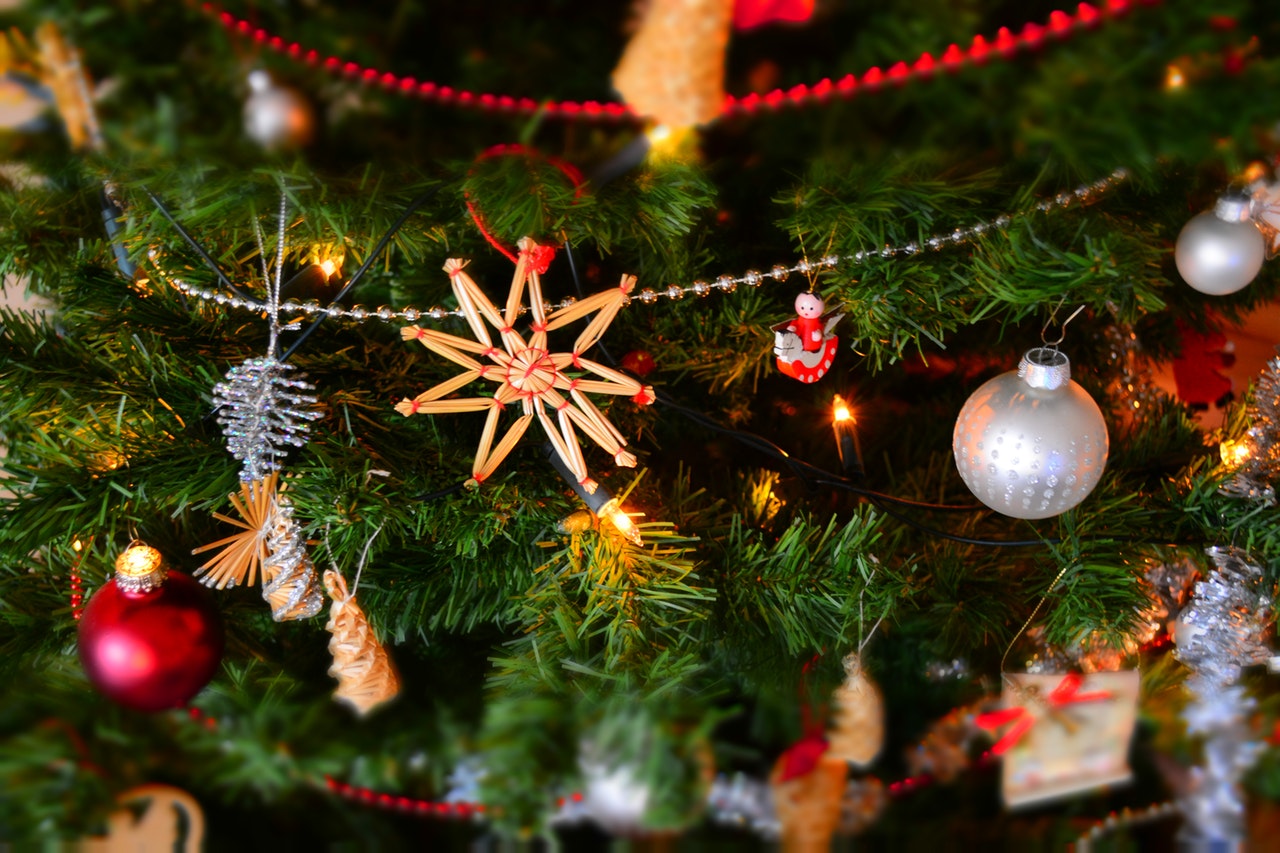Russian New Year – How do Russians celebrate it?
From one of our previous articles you already know that New Year in Russia is a bigger holiday than Christmas. In this article we’ll tell you about how a typical Russians spend their New Year’s Eve and the winter holidays overall.

Christmas and New Year fuss in Russia, as well as throughout the world, comes somewhere in late November – early December. First, in the form of supermarkets filling the counters with the Christmas and New Year items, and then on the streets of cities with the decorations and Christmas trees appearing.
Since Christmas in Russia falls on January 7, most people work until January 30 without any particular interruptions, except, of course, for New Year corporate parties – корпорати́вы [kar-pa-ra-tée-vy] – which are organized by companies for their employees.
Schools and kindergartens do not lag behind and arrange their own “corporate parties” for the kids. A typical celebration in a kindergarten, for example, usually takes place in the morning and is called у́тренник [út-reen-neek], from the word у́тро [út-ra] (morning). In schools, depending on the age of the children, a celebration can be organized in the evenings.
Many people, especially those who have children, set up and decorate real or artificial Christmas trees in their homes. Children cut out snowflakes from paper and stick them on the windows.
Closer to the new year, people begin to congratulate each other C наступа́ющим! [s nas-tu-pá-yu-scheem] which literally means “with the upcoming”, i.e. “Happy upcoming New year!”
Due to the perennial ban on Christmas which existed under the Soviet regime it so happened that the gifts and Ded Moroz (the Russian version of Santa Claus) are the attributes of the New Year for the Russians, not Christmas. Ded Moroz does not usually come alone, but with his granddaughter Snegurochka. The are special services, that allow to book a home visit of Ded Moroz and Snegurochka for the children, so many parents do that. In this case, Ded Moroz and Snegurochka bring the gifts chosen by the parents.
The 31st is usually a non-working day (unless you are a supermarket employee) and is spent in preparation for the celebration. All day you can watch on TV the New Year shows and movies. One of them, which is shown literally every year, is called “Ирония судьбы или С легким паром!” (“Irony of Fate or Enjoy Your Bath!”). This is an ironic and romantic comedy the plot of which also takes place on New Year’s Eve.
It is accustomed to meet the New Year clean and well dressed. Russians believe in the saying “as you meet the New Year, so you spend it”. Therefore, on the 31st, the whole day Russian hostesses cook and make sure that their houses are clean to meet the New Year in all glory.
The typical New Year’s dishes for Russians are Olivier salad, herring under a fur coat, and many other different salads, which are made in such volumes that you can happily eat them a couple of days after the New Year’s feast. The typical garnish are potatoes which can be mashed or just boiled. The most iconic fruit for the New Year is mandarin. During Soviet times, it was almost the only fruit that you could buy at that time of the year. So for many Russians, who happened to live at that time, the smell of mandarin still causes associations with the New Year. Today, of course, you can buy all sorts of fruits and vegetables in the Russian supermarkets.
The traditional drink is champagne. After the champagne is finished people continue with their drinks of choice, like wine of vodka.
According to tradition, Russian sit down at the table somewhere around 11 PM and first see the old year off. But the champagne is not opened yet.
There are eleven time zones in Russia, and each of them meets the New Year in its own time. Therefore, the President’s New Year’s address, which is usually shown at 23:50, is recorded and repeated to viewers in each time zone.
Immediately after the President’s New Year’s address, the chiming clock of the Moscow Kremlin begins to beat (it’s transmitted on TV). Under the chiming clock that beat 12 times, it is customary to take the glasses of champagne and make wishes that should come true next year. In fact, the new year comes at the moment when the chiming clock starts beating, and the moment after the 12th beat means that 1 minute of the New Year has already passed. But no one thinks about this, and the choking of glasses and congratulations “Happy New Year!” start to sound only after the 12th beat.
Many cities in Russia organize their New Year’s fireworks, although not at 12 o’clock, but later, at 2 o’clock in the morning. So that people have the opportunity to celebrate the New Year in the family and in the warmth, and then, for those who want, go watch the fireworks.
Non-working days for Russians continue until January 8, and only after that they go (usually quite reluctantly) back to work.
Due to the fact that in 1918, by Lenin’s decree, Russia began to follow the Gregorian calendar, the date of the New Year changed: January 14 by the new style is January 1 by the old style. Since then, the Russian people started the tradition of celebrating the New Year twice – January 1 and 14. The latter is called the “Old New Year”. “Old” because it’s by the old calendar. Old New Year is a much smaller holiday than New Year. This is not even a day off. But the tradition to congratulate each other still lives, and some even make a little table to celebrate it.
The Orthodox Church still chronically follows the old Julian calendar. That is why Russian Christmas comes two weeks after the Catholic Christmas, on 7th of January.






